Zizhong Confucian Temple: Your Ultimate Guide to China’s Cultural Heritage
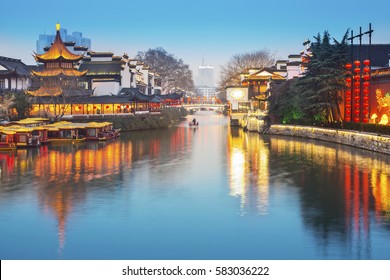
An Essential Guide to Visiting Zizhong Confucian Temple
Nestled in the heart of Zizhong County, the Zizhong Confucian Temple (资中文庙) stands as a testament to China’s rich cultural heritage and deep-rooted respect for Confucian philosophy. This sacred site, often overshadowed by its more famous counterparts, offers a unique glimpse into the teachings of Confucius and the architectural brilliance of ancient China.
Visitors to the temple will be captivated not only by its stunning architecture, characterized by intricate carvings and a harmonious quadrangle layout, but also by the serene atmosphere that envelops the site. As you wander through the temple’s halls, take a moment to admire the revered statue of Confucius, a focal point that embodies the wisdom and virtues he championed.
Among the temple’s treasures are the Dacheng Hall and the impressive collection of plaques inscribed by eight emperors of the Qing Dynasty, each telling a story of reverence and respect for the sage. A visit to the Zizhong Confucian Temple is not merely a journey through space, but also a voyage through time, inviting international travelers to explore the essence of Confucianism and its enduring influence on Chinese culture. Whether you are a history enthusiast, a seeker of spiritual insight, or simply a curious wanderer, this temple promises an enriching experience that will linger long after you leave its tranquil grounds.
In This Guide
- An Essential Guide to Visiting Zizhong Confucian Temple
- The Rich History and Legends of Zizhong Confucian Temple
- Main Highlights: What You Absolutely Can’t Miss
- Planning Your Visit: A Practical Guide
- Tickets: Prices, Booking, and Tips
- How to Get There: A Complete Transportation Guide
- Local Cuisine and Accommodation Nearby
- Frequently Asked Questions
- Final Thoughts on Your Trip
The Rich History and Legends of Zizhong Confucian Temple
Nestled in the heart of Zizhong County, the Zizhong Confucian Temple (资中文庙) stands as a testament to the enduring legacy of Confucian philosophy and its profound influence on Chinese culture. With its origins tracing back to the Ming Dynasty (1368-1644), this temple has served not only as a place of worship but also as a vital educational institution for centuries. The temple was established to honor Confucius, the revered philosopher whose teachings emphasized morality, social relationships, and justice, which were foundational to Chinese society.
The architecture of the Zizhong Confucian Temple is a stunning representation of traditional Chinese design, characterized by a quadrangle layout that harmonizes with the surrounding environment. Visitors are greeted by intricate craftsmanship, from the carved wooden beams to the elegant tiled roofs, all crafted with meticulous attention to detail. Central to the temple is the Dacheng Hall (Hall of Great Accomplishment), where a magnificent statue of Confucius presides over the space, embodying the spirit of learning and virtue that the temple promotes.
One of the temple’s most significant features is a collection of plaques inscribed with the writings of eight emperors from the Qing Dynasty, showcasing the high regard in which Confucian values were held by the ruling class. These artifacts are not just historical records; they also serve as a bridge connecting contemporary visitors with the thoughts and beliefs of past leaders, providing insight into the philosophical underpinnings that shaped governance in imperial China.
Legends surrounding the temple enrich its historical narrative. It is said that during examination periods, students would come to the temple to pray for success, believing that Confucius would bless their efforts. This tradition continues today, as visitors from across the globe come to seek inspiration and reflect on the teachings of Confucius in an environment steeped in history.
The Zizhong Confucian Temple is not merely an architectural marvel; it is a vibrant hub of cultural and educational activities. Throughout the year, the temple hosts ceremonies and events that celebrate Confucian principles, drawing scholars and students alike. This dynamic atmosphere enhances the temple’s role as a living institution, where the past and present coexist, and where the wisdom of Confucius continues to resonate.
For international travelers seeking a deeper understanding of Chinese culture, the Zizhong Confucian Temple offers a unique glimpse into the philosophical heart of the nation. Its rich history, captivating legends, and vibrant traditions make it a must-visit destination, inviting all who enter to ponder the enduring relevance of Confucian thought in today’s world.
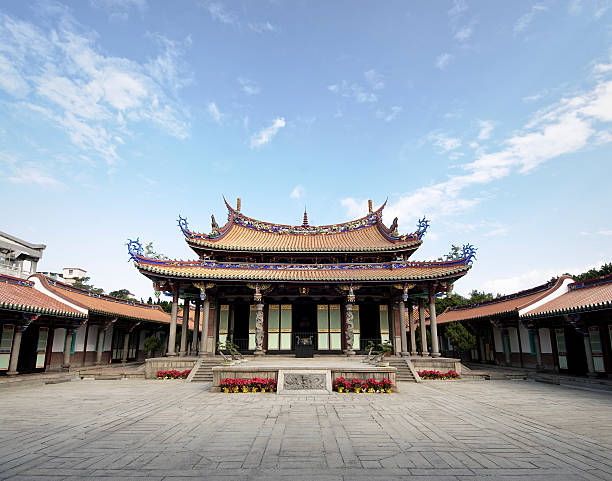
Zizhong Confucian Temple.
Main Highlights: What You Absolutely Can’t Miss
Visiting the Zizhong Confucian Temple is a journey through history and culture that you won’t want to miss. Nestled in the heart of Zizhong County, this temple stands as a testament to the teachings of Confucius and the significance of education in Chinese society. Here are the must-see highlights of this remarkable site:
1. The Grand Entrance
As you approach the temple, take a moment to appreciate the stunning architecture of the entrance gate. The intricate designs and traditional Chinese motifs set the tone for what lies ahead. It’s a perfect spot for a photo to capture the essence of your visit.
2. The Statue of Confucius
Once inside, you’ll be greeted by a majestic statue of Confucius himself. This imposing figure is revered by many and symbolizes the importance of his teachings. Visitors often pause here to reflect on his philosophies and the impact they have had on Chinese culture.
3. Dacheng Hall (Hall of Great Accomplishment)
The heart of the temple is undoubtedly Dacheng Hall, where memorial ceremonies for Confucius are held. This hall showcases stunning craftsmanship and is adorned with plaques written by eight emperors of the Qing Dynasty. These inscriptions are a rare glimpse into the historical respect afforded to Confucius, and their preservation is remarkable.
4. The Stone Tablets
On either side of the courtyard leading to Dacheng Hall, you will find 198 stone tablets, each inscribed with the names of advanced scholars from the Yuan, Ming, and Qing dynasties. These tablets serve as a historical record of those who excelled in their studies, paying homage to the temple’s role as a center of education.
5. The Pavilion of the Sages
Don’t miss the Pavilion of the Sages, a serene spot that offers a moment of tranquility. Here, you can contemplate the teachings of Confucius while surrounded by beautiful gardens. The pavilion is an excellent place to relax and reflect on the rich history that envelops the temple.
6. The Surrounding Architecture
As you explore, take in the unique quadrangle layout of the temple complex, characterized by compact structures and exquisite craftsmanship. Each building showcases traditional Chinese architectural styles, providing insight into the era in which it was built.
7. Cultural Significance
Beyond its architectural beauty, the Zizhong Confucian Temple holds immense cultural significance. It represents the enduring legacy of Confucianism in China and serves as a reminder of the values of respect, education, and moral integrity that he championed.
8. Local Events and Ceremonies
If you’re fortunate, you may witness or participate in local ceremonies or festivals that celebrate Confucian traditions. These events provide a unique opportunity to engage with the local culture and understand the contemporary relevance of Confucian values.
Conclusion
A visit to the Zizhong Confucian Temple is not just a tour of an ancient site but an immersive experience into the heart of Chinese philosophy and education. Allocate 1-2 hours to fully appreciate the beauty and significance of this temple, and don’t forget to bring your camera to capture the stunning sights along the way!
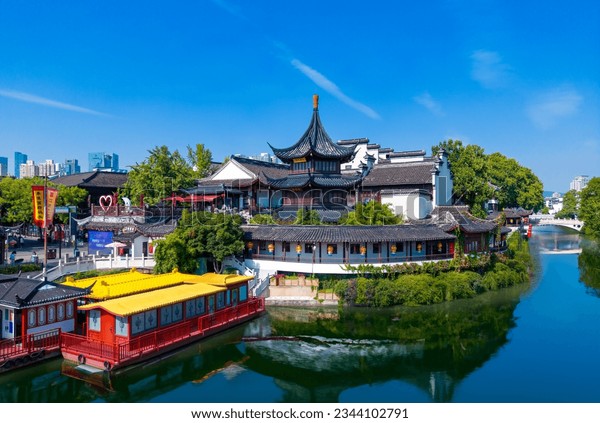
Zizhong Confucian Temple.
Planning Your Visit: A Practical Guide
Visiting the Zizhong Confucian Temple offers a unique opportunity to immerse yourself in Chinese culture and philosophy. Here’s a comprehensive guide to help you plan your visit to this historical site in Zizhong County.
Getting There
Location:
The Zizhong Confucian Temple is centrally located on Zhuangyuan Street, making it accessible from various points in the town.
Transportation:
– Public Transport: Local buses frequently service Zizhong County, and you can inquire with your accommodation for the best routes to the temple.
– Taxi Services: Taxis are readily available and can provide a convenient option for those unfamiliar with public transport. Ensure to agree on a fare before starting your journey.
– Walking: If you’re staying nearby, a leisurely stroll to the temple can be quite enjoyable, allowing you to soak in the local atmosphere.
Opening Hours & Admission
- Opening Hours: The temple is open from 9:00 AM to 12:00 PM and 1:00 PM to 5:00 PM. Plan to visit outside of these hours to enjoy a quieter experience.
- Recommended Visit Duration: Allocate about 1-2 hours to explore the temple and its surroundings.
- Admission Fees: Check for any applicable entrance fees prior to your visit, as these can change.
What to See
The Zizhong Confucian Temple boasts a rich architectural design and historical significance:
– Dacheng Hall: This is the main hall where ceremonies in honor of Confucius are held. Inside, you’ll find impressive plaques written by eight emperors of the Qing Dynasty.
– Statues of Confucius: The statue of Confucius, along with the “Sage Confucius,” is a must-see for visitors interested in Confucian philosophy.
– Stone Tablets: Explore the courtyard where you’ll find numerous stone tablets inscribed with the names of advanced learners from historical dynasties.
Nearby Attractions
While you’re in Zizhong, consider visiting some nearby attractions:
– Fantawild Dino Kingdom: An amusement park that’s great for families and thrill-seekers alike.
– Chengdu Research Base of Giant Panda Breeding: A bit further afield, this is a perfect stop for animal lovers.
– Dujiangyan Scenic Area: Known for its historical irrigation system, this area offers beautiful landscapes and a glimpse into ancient engineering.
Food and Accommodation
- Dining Options: Look for local eateries near the temple that serve traditional Sichuan cuisine. Be sure to try some local specialties for a full cultural experience.
- Accommodation: Various hotels and guesthouses are available in Zizhong County. Book in advance, especially during peak tourist seasons, to secure the best rates and locations.
Practical Tips
- Best Time to Visit: Spring (March to May) and autumn (September to November) are ideal for pleasant weather.
- Dress Code: Since this is a cultural and historical site, dress modestly and respectfully.
- Language: While some locals may speak basic English, it’s helpful to learn a few phrases in Mandarin or have a translation app handy.
Final Thoughts
A visit to the Zizhong Confucian Temple is more than just a sightseeing trip; it’s an opportunity to reflect on Chinese ideals and to appreciate the artistry and history of this revered site. With this practical guide, you are well-equipped to make the most of your visit. Enjoy your journey through time and philosophy!
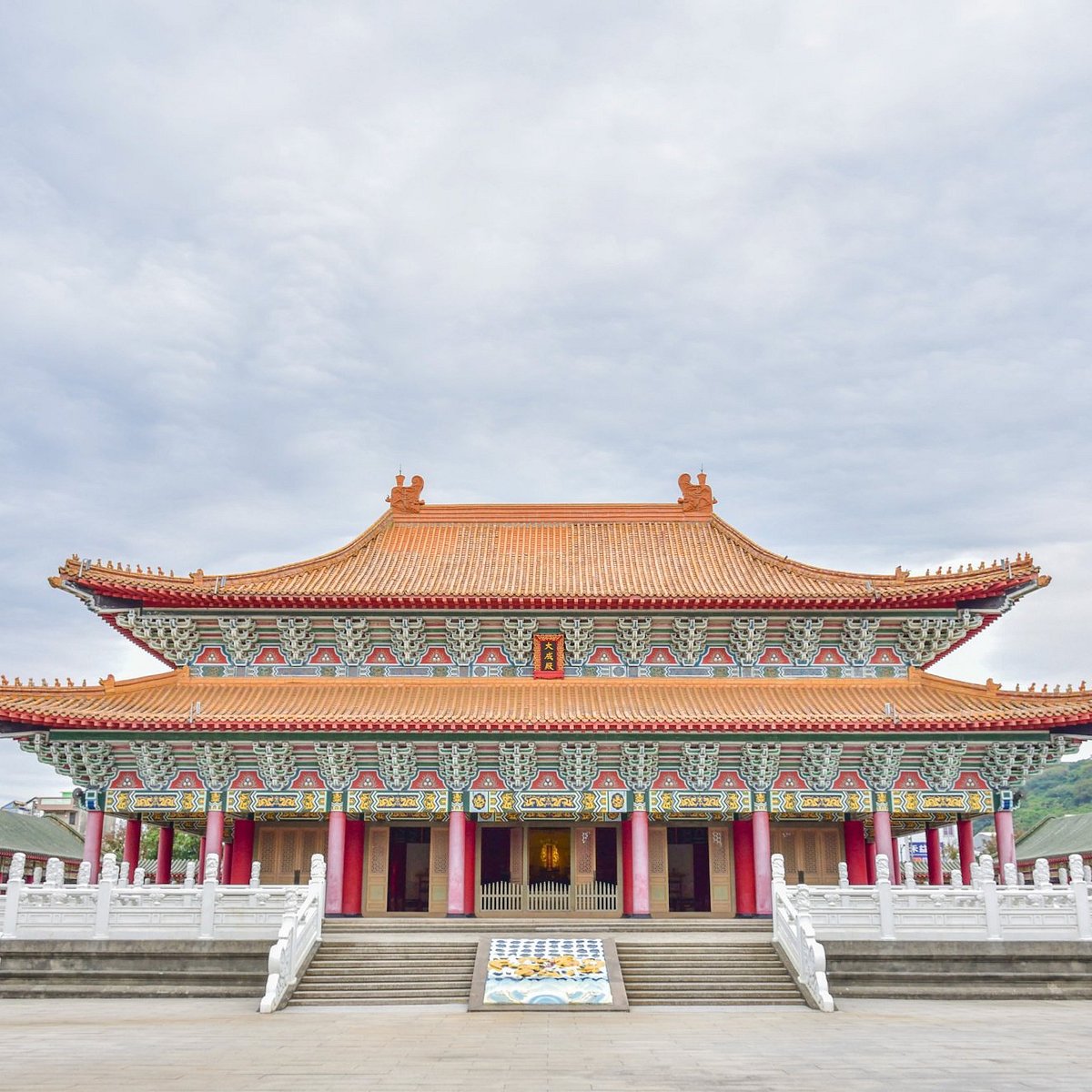
Zizhong Confucian Temple.
Tickets: Prices, Booking, and Tips
Visiting the Zizhong Confucian Temple (资中文庙) offers an enriching experience as you delve into the teachings and legacy of Confucius. Here’s everything you need to know about ticket prices, booking options, and some handy tips to enhance your visit.
Ticket Information
Admission Fee: Entry to the Zizhong Confucian Temple is generally affordable, with tickets priced around RMB 30 per person. This nominal fee grants you access to the temple’s stunning architecture and significant cultural artifacts, including the revered statues of Confucius.
Opening Hours: The temple welcomes visitors from 9:00 AM to 12:00 PM and 1:00 PM to 5:00 PM, making it convenient to plan your visit. Note that the temple closes for lunch from 12:00 PM to 1:00 PM, so ensure to time your visit accordingly.
Booking Options
While tickets can often be purchased directly at the entrance, to avoid any potential lines or sold-out situations, it’s wise to consider booking in advance through online platforms like Trip.com. You can also check for any promotions or bundled offers that might include guided tours or other nearby attractions.
Tips for a Smooth Visit
-
Plan Your Visit: Aim to spend about 1-2 hours at the temple to fully appreciate its historical significance and architectural beauty. This timeframe allows you to explore the main hall and other structures leisurely.
-
Best Time to Visit: The temple is less crowded during weekdays compared to weekends, making it a great option for a tranquil visit. Early mornings or late afternoons can also provide a more serene atmosphere.
-
Dress Code: As a site of cultural and historical importance, it is respectful to dress modestly. Comfortable shoes are also recommended, as you may want to explore the temple grounds thoroughly.
-
Photography: Don’t forget your camera! The temple’s intricate designs and serene surroundings provide fantastic photo opportunities. However, be mindful of any signs regarding photography restrictions, especially in areas of worship.
-
Guided Tours: If you’re keen to learn more about Confucianism and the temple’s history, consider joining a guided tour. Local guides often enrich your experience with fascinating stories and insights.
-
Nearby Attractions: After your visit, consider exploring the surrounding area. Zizhong offers various attractions that reflect its cultural heritage, so take some time to discover more about this charming town.
With thoughtful planning and a curious spirit, your visit to the Zizhong Confucian Temple can be a highlight of your travel itinerary. Enjoy your journey into the heart of Confucian philosophy!
How to Get There: A Complete Transportation Guide
Reaching the Zizhong Confucian Temple (资中文庙) is a rewarding endeavor, as this serene site is not only a place of historical significance but also a beautiful representation of traditional Chinese architecture. Here’s your comprehensive guide to navigating your way to this cultural gem in Zizhong County, Sichuan.
Getting to Zizhong
By Air
The nearest major airport is Chengdu Shuangliu International Airport (CTU), located about 130 kilometers (81 miles) from Zizhong. From the airport, you have a couple of options:
- Taxi: The most convenient but pricier option. Expect to pay around 300-400 RMB for the one-way trip, depending on traffic.
- Airport Shuttle: Take the shuttle bus to Chengdu’s city center and then transfer to a train or bus heading to Zizhong.
By Train
Zizhong is well-connected by rail. The Zizhong Railway Station serves several trains from major cities, including Chengdu.
- From Chengdu: You can catch a high-speed train from Chengdu East Railway Station (成都东站) to Zizhong Station. The journey takes approximately 1.5 to 2 hours, and tickets are budget-friendly, usually ranging from 50 to 100 RMB.
By Bus
If you prefer traveling by bus, Zizhong is accessible from various locations within Sichuan Province.
- From Chengdu: Head to the Chengdu Xinnanmen Bus Station (新南门汽车站) where you can find direct buses to Zizhong. The bus ride typically lasts about 2-3 hours and costs around 60-80 RMB.
By Car
For those who enjoy driving, renting a car can be a flexible way to explore. The drive from Chengdu to Zizhong takes roughly 1.5 to 2 hours, depending on traffic. Follow the G5 expressway, and look for signs directing you to Zizhong County.
Local Transportation in Zizhong
Once you arrive in Zizhong, getting to the Confucian Temple is straightforward:
-
Walking: If you’re staying nearby, the temple is situated on Zhuangyuan Street, easily reachable on foot. It’s a pleasant stroll that allows you to soak in the local atmosphere.
-
Taxis and Ride-Hailing Apps: Local taxis are available, and you can use popular ride-hailing apps like Didi to get around, which are both convenient and affordable.
Visiting the Temple
The Zizhong Confucian Temple is open from 9:00 AM to 12:00 PM and 1:00 PM to 5:00 PM, allowing ample time for exploration. Allocate about 1 to 2 hours to fully appreciate the intricate architecture and historical significance of this site.
Tips for Your Visit
- Language: While some signs may be in English, having a translation app can be helpful as English is not widely spoken.
- Cash: It’s advisable to carry some cash, as small vendors may not accept cards.
- Cultural Respect: As a religious site, remember to dress modestly and be respectful of the customs and practices observed here.
With this transportation guide, you’ll be well-equipped to visit the Zizhong Confucian Temple, immersing yourself in the rich tapestry of Chinese culture and history. Enjoy your journey!
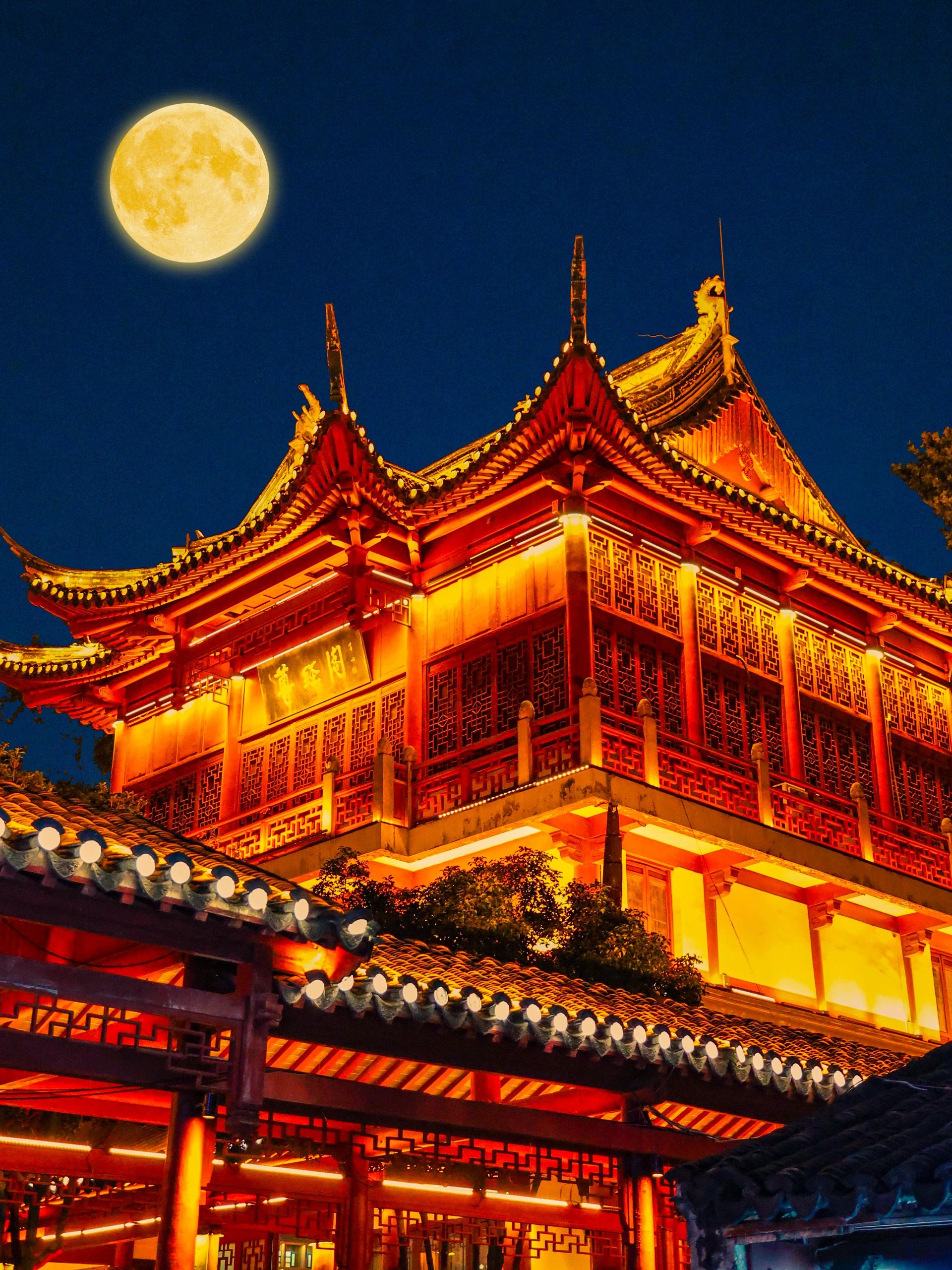
Zizhong Confucian Temple.
Local Cuisine and Accommodation Nearby
When visiting the Zizhong Confucian Temple, ensure you immerse yourself in the rich flavors of the local cuisine and find a cozy place to rest after your explorations. Here are some delightful options nearby:
Savoring Local Flavors
1. Zizhong Noodle House
Nestled just a short walk from the temple, this charming eatery is known for its hand-pulled noodles. Try the Zizhong Spicy Noodle Soup, which packs a flavorful punch with locally sourced spices. The warm ambiance and friendly staff make it a great spot to unwind.
2. Traditional Sichuan Restaurant
Experience the bold and vibrant tastes of Sichuan cuisine at this beloved local restaurant. Signature dishes include Mapo Tofu and Kung Pao Chicken, both renowned for their mouthwatering spice levels. Don’t forget to pair your meal with a glass of locally brewed tea to balance the heat.
3. Street Food Stalls on Zhuangyuan Street
For a more casual dining experience, wander along Zhuangyuan Street, where you’ll find an array of street food vendors. Indulge in local snacks like Chuan Chuan (skewers) and Baozi (steamed buns). This is a great way to taste authentic flavors while mingling with the locals.
Comfortable Stays
1. Zizhong Hotel
Located conveniently within walking distance of the temple, Zizhong Hotel offers comfortable accommodations at reasonable rates. The rooms are well-appointed, providing a peaceful retreat after a day of sightseeing. The hotel also features an on-site restaurant serving breakfast options, ensuring you start your day right.
2. Harmony Inn
Just a short drive from the temple, Harmony Inn is an excellent choice for travelers seeking a cozy atmosphere. The inn combines traditional decor with modern amenities, offering guests a unique experience. Enjoy a complimentary breakfast featuring local dishes, and relax in the garden area after your adventures.
3. Guesthouse Near the Temple
For a more intimate experience, consider booking a room at a local guesthouse. These charming accommodations often include personalized service and home-cooked meals. It’s a perfect way to connect with local culture and hospitality.
With these culinary delights and comfortable accommodations, your visit to the Zizhong Confucian Temple will be both enriching and enjoyable. Whether you are sampling spicy noodles or relaxing in a cozy inn, you’ll find that Zizhong has much to offer its visitors.

Zizhong Confucian Temple.
Frequently Asked Questions
Frequently Asked Questions
1. What are the opening hours for the Zizhong Confucian Temple?
The Zizhong Confucian Temple is open from 9:00 AM to 12:00 PM and 1:00 PM to 5:00 PM. Make sure to plan your visit accordingly!
2. How much does it cost to enter the temple?
Entry fees can vary, so it’s best to check local resources or at the entrance. Typically, the cost is affordable, making it a great option for budget travelers.
3. How long should I plan to spend at the Zizhong Confucian Temple?
Most visitors recommend spending about 1 to 2 hours exploring the temple. This allows ample time to appreciate the architecture, the statue of Confucius, and the historical plaques inside.
4. Is the Zizhong Confucian Temple accessible for people with disabilities?
The temple features a quadrangle-style layout, and while many areas are accessible, it’s advisable to check for specific facilities such as ramps or assistance for those with mobility challenges.
5. Are there guided tours available at the temple?
While guided tours may not be officially offered, local guides can often be found nearby, or you can hire a private guide to enhance your experience with insights into the temple’s rich history.
6. What is the best time of year to visit the Zizhong Confucian Temple?
The temple can be visited year-round. However, spring (March to May) and autumn (September to November) offer mild weather and beautiful scenery, making these seasons particularly enjoyable.
7. How do I get to the Zizhong Confucian Temple?
The temple is located on Zhuangyuan Street in Zizhong County. You can reach it by taxi or local buses from nearby cities. If you’re traveling from Chengdu, consider taking a train or bus to Zizhong.
8. Are there other attractions near the Zizhong Confucian Temple?
Yes! After visiting the temple, you can explore other local attractions such as the Fantawild Dino Kingdom and the Chengdu Research Base of Giant Panda Breeding, both of which are within a reasonable distance for a day trip.
Final Thoughts on Your Trip
As your visit to the Zizhong Confucian Temple comes to an end, take a moment to reflect on the rich tapestry of history and philosophy that this remarkable site embodies. Nestled in the heart of Zizhong, this temple is not just a place of worship; it is a sanctuary for the teachings of Confucius, a beacon of wisdom that has guided generations. The exquisite architecture, with its intricate craftsmanship and serene atmosphere, invites you to pause and appreciate the cultural heritage of China.
Walking through the temple grounds, you’ll find yourself immersed in the echoes of the past, surrounded by the same ideals that shaped ancient Chinese society. The impressive Dacheng Hall, adorned with plaques from Qing Dynasty emperors, stands as a testament to the enduring relevance of Confucian thought. Whether you are a history enthusiast, a seeker of knowledge, or simply a traveler curious about different cultures, the Zizhong Confucian Temple offers a unique glimpse into the philosophical foundations that have influenced East Asian civilization.
As you depart, carry with you the spirit of reflection and respect that the temple embodies. Let your experience inspire you to delve deeper into the values of harmony, respect, and education that Confucianism promotes. The wisdom of Confucius remains a guiding force, and your visit to this sacred space has surely enriched your journey through the heart of China. Safe travels as you continue to explore and discover the wonders this vibrant country has to offer!